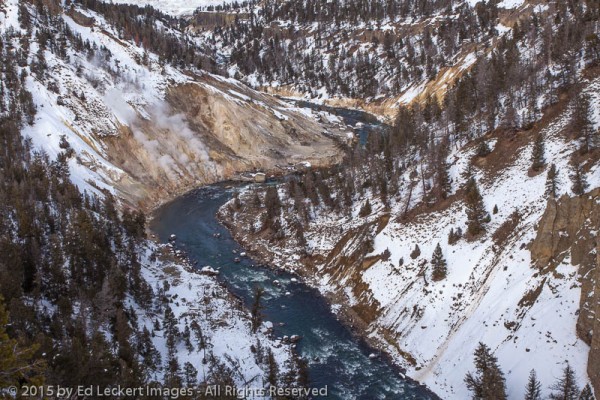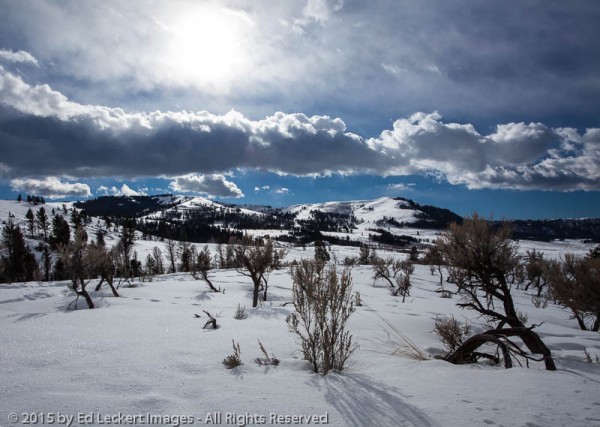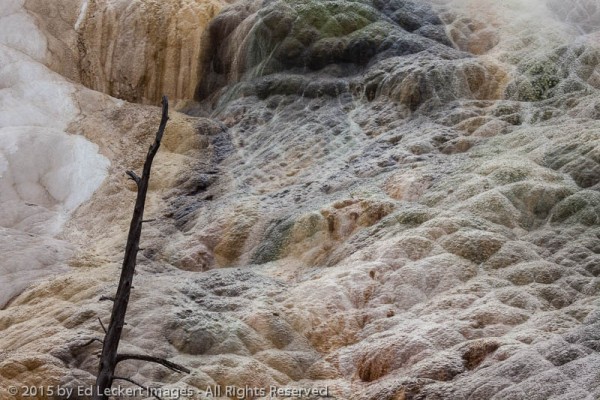


The last time I visited Yellowstone National Park was with my parents in 1962. Even as a preschooler I couldn’t help but notice the wonder of Old Faithful as it erupted in a column of steam and boiling water every so many minutes, just like clockwork. It was time to go back to Yellowstone, but this time, it would be in the middle of winter.
“Why on earth would anyone want to visit Yellowstone in the winter?”, you ask. “I heard they had a record low of -66°F (-54°C). Why don’t you wait until summer like a normal person?”.
Well, a visit to Yellowstone in the winter is a completely different experience from one you get in the summer, and not just because it’s cold. The hordes of tourists are gone. The park is carpeted in a layer of beautiful white snow. And the animals’ behavior is different. Instead of being dispersed throughout the huge park, wildlife has to move to the slightly more hospitable grounds of the Northern Range, where the terrain is lower in elevation and the winter less harsh. Yellowstone National Park is nestled in the northwest corner of Wyoming, not quite fitting within the lines as it hangs over into Idaho to the west and Montana to the north. Much of the wildlife congregates near the Wyoming/Montana border in the Lamar Valley, which happens to have a road, the only one in the park that’s open in the winter, running right through it. So, in short, the wildlife viewing opportunities are greatly enhanced.
And that was my motivation for this trip: wildlife. In fact, I was primarily interested in finding wolves. Since their reintroduction to the park in 1995, their impact on the park ecosystem has been incredibly positive, far beyond expectations, and I wanted to witness a small part of this amazing story for myself.

Steam vents, or fumaroles, let off steam and a not very pleasant odor beside the Yellowstone River, in Yellowstone National Park, Wyoming.
Although only the northernmost road in the park is plowed and open during the winter, a wintertime visitor can still visit other parts of the park, including the famous Old Faithful area. This is done typically by catching a ride on a snowcoach, which is a van with its wheels replaced by a tread assembly, much like a snowmobile or tank. However, I had a lot of gear with me that made this option awkward, and frankly, what I was after was up in the north where I could easily drive. There are great images to be had around the geysers in the winter as they spew steam into the freezing air, but those images will have to wait until next time.

The afternoon sun peeks through clouds on a typical winter day, in Yellowstone National Park, Wyoming.
I thought about camping, too. There are several reasons why I might camp. One is to save money. But access is more important. When it’s time to do those sunrise photo shoots, you don’t want to drive in the dark for an hour and a half to get to your location. However, in this case, the nearby gateway towns of Gardiner, MT to the west, and Cooke City, MT to the east not only had reasonably priced accommodations, they were actually quite convenient to where I needed to be. Besides, I couldn’t predict ahead of time what the weather would be, so I made my reservations a couple of months in advance and stopped worrying about it.
As it turns out, the weather was pleasant enough, with limited snowfall during my visit and no high winds or blizzard-like conditions. However, it was right at 1°F (-17°C) each morning when I started my Subaru in Cooke City, so I was happy enough to be in a motel.

A lone snag stands before a travertine hill, a formation created by calcium carbonate deposits from a nearby spring. The colors are created by thermophiles, or heat-loving microorganisms, in Yellowstone National Park, Wyoming.
So the plan was simple. I was to stay in Gardiner for a couple of nights while I got my bearings and worked the northwestern part of the park, particularly the Mammoth Hot Springs area and its travertine terraces. Then I would move to Cooke City where I could wake up closer to the Lamar Valley where I wanted to do the majority of my wildlife shooting. I spent about a week in the park, and while there was able to spot and photograph elk, bighorn sheep, bison, ravens, magpies, coyote, fox, and yes, wolves.
I’ll talk more about my wildlife experiences in future weeks, but for now I wanted to give you a sense of what the overall area looks like. And, of course, I’m already planning my next trip, but we’ll talk about that later, too.
